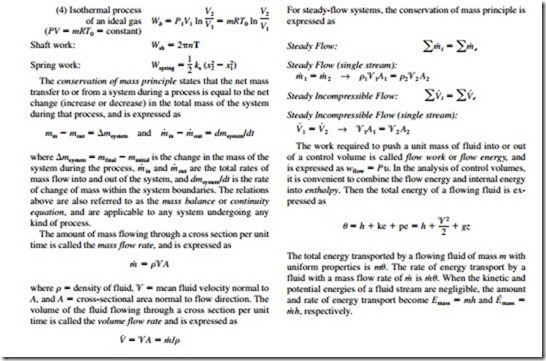SUMMARY
Energy can cross the boundaries of a closed system in the form of heat or work. For control volumes, energy can also be trans- ported by mass. If the energy transfer is due to a temperature difference between a closed system and its surroundings, it is
Work is the energy transferred as a force acts on a system through a distance. The most common form of mechanical work is the boundary work, which is the work associated with the expansion and compression of substances. On a P-V diagram, the area under the process curve represents the boundary work for a quasi-equilibrium process. Various forms of work are expressed as follows:
Related posts:
Benefits, drawbacks and operational issues:Low base speed motors
System selection considerations:Variables investigated
Gas–solid separation devices:Separation devices and Gravity settling chambers.
Optimizing and up-rating of existing systems:Case study
Introduction to pneumatic conveying and the guide:Industries and materials and Mode of conveying
Conveying characteristics:Energy considerations and The influence of conveying air velocity.
PNEUMATIC BASICS
Safety.
Fundamental Principles:IndustrIal PrIme movers
ENERGY TRANSFER BY HEAT,WORK,AND MASS:ENERGY TRANSFER BY WORK
ENTROPY:WHAT IS ENTROPY?
ENTROPY:ENTROPY CHANGE OF LIQUIDS AND SOLIDS
SUMMARY OF ENTROPY
SUMMARY OF HEAT EXCHANGERS
RADIATION HEAT TRANSFER:THE VIEW FACTOR
